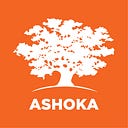Confronting the other pandemic: Mental health
Two social entrepreneurs on how the pandemic is hitting young people and where we go from here
One year in, how are students navigating social isolation and, for many, mental health challenges? And what creative ideas have surfaced this year that point the way forward, to a new culture of health? For perspective, we tapped two Ashoka Fellows leading networks by and for young people: Louise Langheier and David Flink.
Meet Louise
With her co-founders, Louise started Peer Health Exchange as a college student, in response to what high school students said they wanted — information about mental and sexual health, delivered by someone closer to a peer than a classroom teacher. In the 20 years since, PHE has activated 15,000 university students to show up as peer health educators for 150,000 ninth graders.
Meet David
David started Eye to Eye at age 18 — now, 20 years on, it’s a vibrant network by and for thousands of young people who have learning and attention challenges, like learning disabilities (LD). Eye to Eye teaches students that they have a right to be seen, heard, and valued. David takes pride in being a person who has dyslexia and ADHD.
Check out our highlights below, and watch the full conversation here (35 min).
Pandemic response, part I — Louise
The year has taken a toll on most people’s mental health, with young people in the U.S. reporting 2x more anxiety and depression. Louise reflects on these trends — and also on the powerful and inspiring responses of young people in the Peer Health Exchange network.
Pandemic response, part II — David
David reminds us that for most of the 1 in 5 students who are different learners, school has never inspired a sense of belonging. (This is what Eye to Eye is trying to shift.) He shares his response to the pandemic, and how listening to young people informed Eye to Eye’s adaptation.
A different year, not a lost year
Notions of a “lost” year are neither helpful nor accurate, says Louise. Let’s focus on what is working, and the opportunities for growth and impact that young people are acting on. She shares how Peer Health Exchange embraced new strategies to unlock the potential of college-age health educators everywhere.
Collective imagining + a letter to the President
David reminds us that we can all develop flexible and adaptive mindsets, and in this moment, collectively imagine a better future state. He shares how Eye to Eye’s community of young people drafted a letter to the incoming administration that includes seven recommendations for the future of schools. (One recommendation is: give young people “the power to make decisions about our future.”)
Supporting young changemakers
How can adults support young people in this moment? David and Louise advise: make sure young people are part of conversations— not the subject of conversations. Include young people in decisions that may have been adult-driven before. Create things with young people, not for them. Listen to the end to catch Louise’s call to action:
You can watch the full discussion here (35 min, includes audience Q&A).
This conversation is part of Welcome Change, Ashoka’s weekly “news hour” that taps the expertise of social entrepreneurs on timely topics. This conversation was supported by Ashoka’s Making More Health partnership. Browse upcoming and past conversations here.

